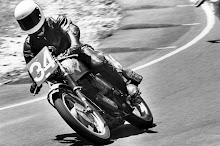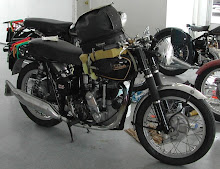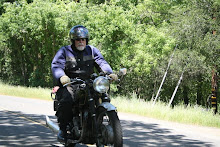 WW2 Army Velocettes
WW2 Army VelocettesThe second World War seems to be the first time Velocette's were seen in the military and the WD Velocette was the MDD, with Velocette given an order for 1200 military MAC’s from the French Government. However only a few were delivered before the French capitulation to the advancing German Army and the rest of the order was taken up by the British War Dept. with the official title MAC (WD). They became known as the MDD. Engine and frame numbers started at MDD1101 produced in June 1940 through to MDD12201.
100 ex French machines went to the Regional Ordnance Depot, York, UK and the rest to the Army Chilwell, Central Ordnance Depot.
Supposedly another 200 unnumbered engines were ordered, but completion is not clear.
Price was £51.


 Phil Irving improved the WD (MAC) spec. during 1941 and when the UK War Office placed another order for 2000 WD (MAC’s) in June 1941 it was changed in favour of the MAF.
Phil Irving improved the WD (MAC) spec. during 1941 and when the UK War Office placed another order for 2000 WD (MAC’s) in June 1941 it was changed in favour of the MAF.MAF..the “AF” meant Army forces.
Only 947 MAF’s were eventually built with matching frame and engine numbers starting with MAF1001.
Probably not delivered till late 1941 and ending with MAF1748 in Sept.1942.
Because the MAF was comparatively expensive the order was cancelled with most going to the UK, although some were said to have gone to Russia.
The photo of the WW2 MAF together with the closeup of the timing area shows the replacement timing cover and gearbox cover in cast iron rather than the usual aluminium. The aircraft industry at war had first call on aluminium.
The pri
 ce was UK£68.
ce was UK£68. During 1940 road motorcycles in UK were required to have blackout masks over their headlights and taillights with a slit illumination only. The photo of the 1940 production MSS Velo shows this.The photo of the rows of machines with Velocettes visible to the LHS is in April 1946, when the Army was selling off all their now surplus motorcycles, including those impressed during the war. The other photo of the "aviated" KSS Velo is captioned "Training army motorcyclists..." Left click on photos to enlarge.
During 1940 road motorcycles in UK were required to have blackout masks over their headlights and taillights with a slit illumination only. The photo of the 1940 production MSS Velo shows this.The photo of the rows of machines with Velocettes visible to the LHS is in April 1946, when the Army was selling off all their now surplus motorcycles, including those impressed during the war. The other photo of the "aviated" KSS Velo is captioned "Training army motorcyclists..." Left click on photos to enlarge.Australian Army Velocettes
 Interesting tale of a 1960 MSS Velocette, Engine number MSS12883 which was delivered from the Velocette factory to the Australian Army for proving trials as an Army successor to the WW2 WLA Harley Davidson in use up to then by the Aust. Army dispatch riders and which now has 2777 miles on the clock.
Interesting tale of a 1960 MSS Velocette, Engine number MSS12883 which was delivered from the Velocette factory to the Australian Army for proving trials as an Army successor to the WW2 WLA Harley Davidson in use up to then by the Aust. Army dispatch riders and which now has 2777 miles on the clock.It wasn’t successful in the trials, as the Army adopted the BSA B44 ( an unmitigated disaster, as I rode them in my time in the Army Reserve…..)
Following an advert in the “Melbourne Age” in 1964, Aust. Velo OC member and stalwart Leo Andrews went to the Army auctions at Tottenham, Victoria and successfully bid about £200 for the bike. Leo’s friend Lyle Clark brought the other Army MSS auctioned on the day, a bike he painted black and eventually sold. Leo still has his although it has never been civilian registered or ridden on the road. The photo shows Leo with friend Bruce Phillips ( hand on seat).

Acknowledgement is given to Dave Masters from whose interesting book "Velocette, an Illustrated Profile of Models 1905-1971" I quoted from on the WW2 Velos.









1 comment:
My MAC is an early 1946 model and uses a few components from some war department model. The WD girder fork links seem to be quite a common component in MACs of this era.
Post a Comment